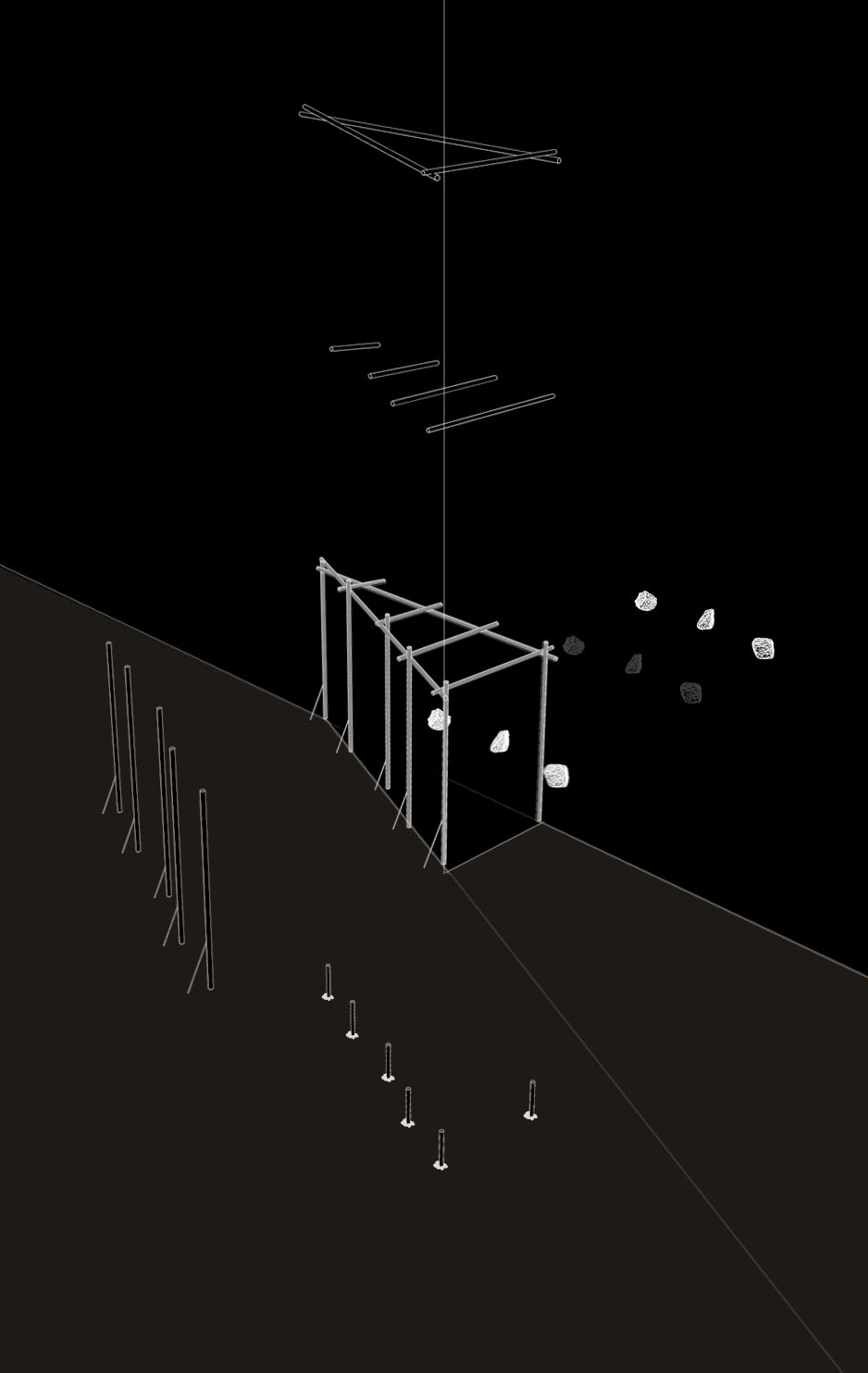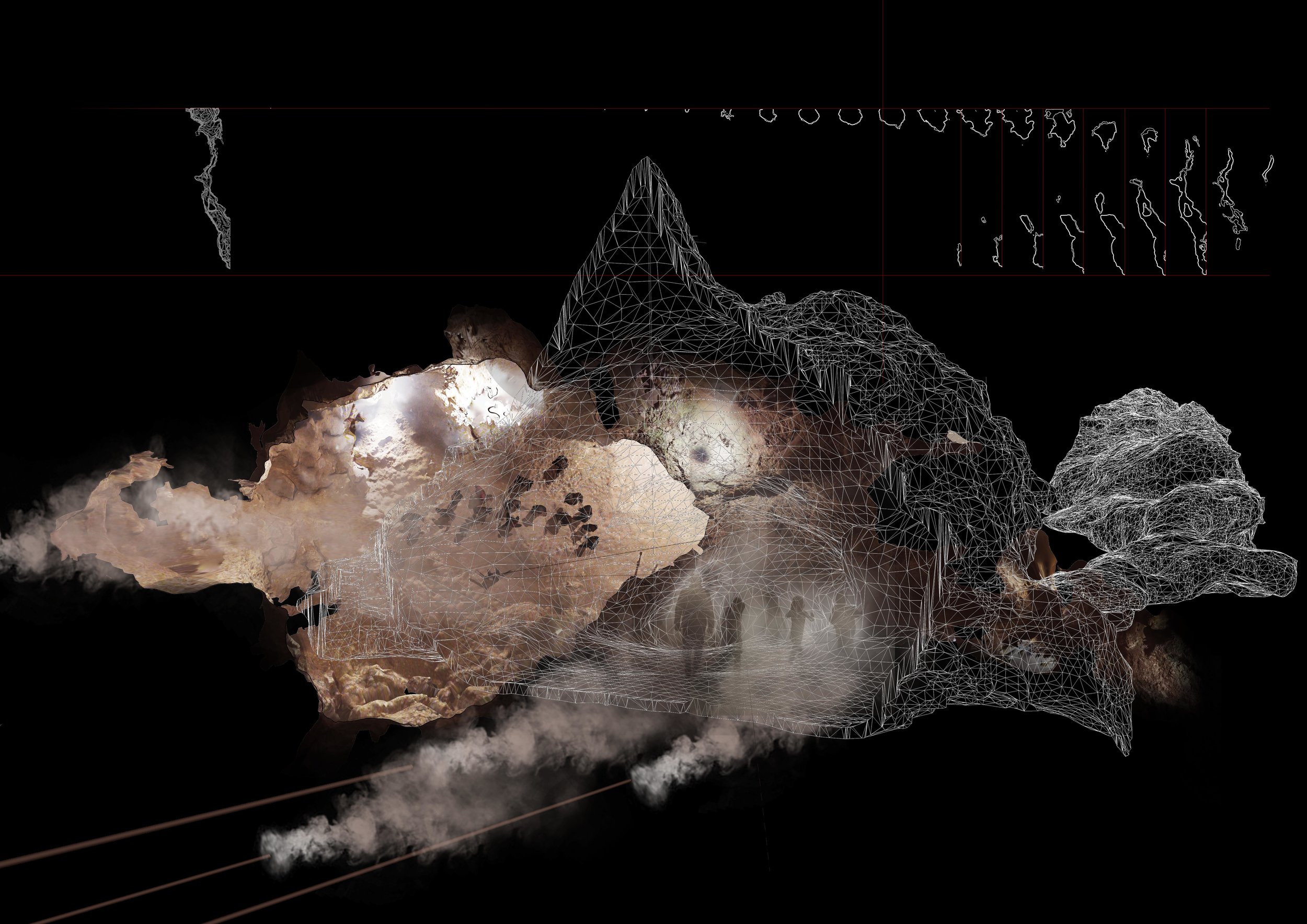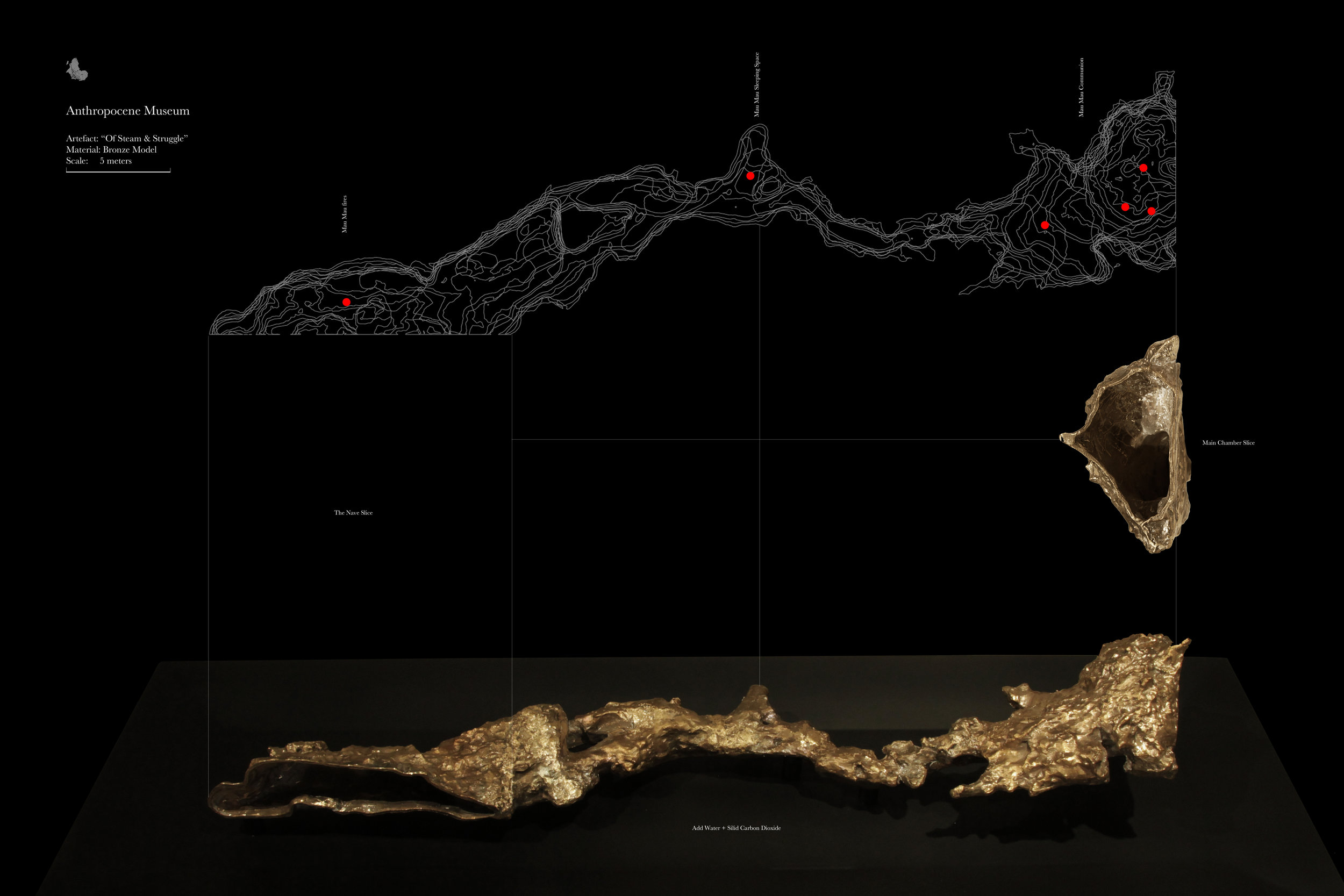ANTHROPOCENE MUSEUM 1.0 | Of Steam & Struggle
Exhibited in the summer of 2019, at the Cooper Hewitt, Smithsonian Design Museum in New York city, and the Cube Museum in Kerkrade, Netherlands. We invited the public to experience mapped architectural and structural readings of caves along the Great Rift Valley of East Africa, stretching from Mount Suswa’s Baboon parliament, 150 km west of Nairobi City, and of a similar lava tube morphology was the Mbai Caves in Kiambu County within the greater Nairobi area.
We recorded a curation of discursive performative events of resistance in the caves of Mount Suswa, locally known as Ol Doinyo Nyukie, which translates to ‘the Red Mountain’ in the local Maasai language; that erupted in the Pleistocene Epoch between to 2 to 1.7 million years ago. At the heart of this exhibition we confronted the adverse effects of geothermal energy extraction, where Kenya is impressively powered by green energy, with geothermal, hydro, wind, and solar accounting for over 8o% of the national power grid. As much as geothermal energy positively offers the citizens of Kenya 30% of its renewable energy supply, it has been negatively operationalised causing displacement of the Maasai people and destruction of natural habitats. This was highlighted in this damning world bank report. We spoke to the community to reflect on the conundrum of these complex issues, without tarnishing Kenya’s high moral standing as one of the few countries in the world that has already achieved one of its primary climate change mitigating targets, with most of the so called developed nations lagging far behind.
We made a short film titled ‘Olmanyara’ (meaning ‘Nature’ in Maasai), featured above that directly confronted the adverse effects of geothermal energy extraction practices taking place close to Mt Suswa. We recorded critiques from the local Maasai community regarding the negative social and environmental impacts of extraction. Today, the natural and cultural heritage of Suswa is currently under threat from the government’s voracious appetite to exploit more geothermal energy; this is as the country hurtles towards its commitment to power the entire country using green energy by 2030. We continue to question how this can be done without compromising the age-old interests of the local Maasai community and natural balance of this pristine and mythical Great Rift Valley site. We convened with the artist, Jackie Karuti, a local Maasai conservationist, Ishmael Nkukuu, a young Maasai herds boy, Sirima Kapiani, and an anti-colonial Mau Mau veteran, Beatrice Wanjiku, to discuss these challenges and think of ways to work with nature to resist the environmental and social pressures.
We concurrently exhibited AM 1.0 on the upper ground floor of the Copper Hewitt Smithsonian Design Museum marked on the plans below in orange, and the Cube Museum in Kerkrade Netherlands. We shared laser scanned leather / hide drawings of the Mbai cave, a scaled 1:100 model of the cave, and a screening of the short film featured above. Following the pandemic, the Cube Museum unfortunately closed down.
Mount Suswa / Ol Doinyo Nyukie Eruption
Using special effects with the existing satellite imagery of the mountain, we simulate the eruption that is believe to have taken place almost 2 - 1.7 million years ago in the Pleistocene epoch better know as the Ice age.
Cave allegory structure made of bamboo
Image of Mount Suswa’s inner Crater
Mbai Cave cross section drawings and plans
In cave system 16A we built a temporary bamboo structure using hybrid measurements based on our own African anatomical proportions and adapted sequences of Fibonacci numbers to create an alternative interpretation of Plato’s puppeteering infrastructure from the Allegory of the cave. Within this structure we framed a space within the cave to hold a discussion in resistance against the unethical and unsustainable practices by both local and international governments, as well as foreign organisations that have pushed to exploit this abundant natural resource, largely in disregard of the local community interests.
Baboon Parliament
The caves are home to a great number of wild animal species, such as in the ‘Baboon Parliament.’ This section of the caves 18C & D are distinguished by a number of large cave roof collapse, dome-shaped with one holding a ten-meter diameter oculus, which we refer to as the origin of Rome’s Pantheon, preceding it by 1.7 million years. We produced drawings and models to depict these similitudes as a way to ground the broader significance of a site seldom reflected on within the mainstream discourse of architecture. The powerful construction process of the lava that burnt through rock following the eruption of Mount Suswa, such as multiple roof collapses across the mountain, allowed light and life to come into the cave as the Pantheon did later. The Pantheon’s proportions align with that of the Baboon Parliament on multiple levels. We used the imagined hovering hemisphere in drawing and model to read the rotunda in both settings, and return the reading of architecture to its root, within the Great Rift Valley, where our early ancestors roamed and imagined.
Mbai Mau Mau Cave
Located only 10km from Nairobi city this cave was used by the Mau Mau freedom fighters who fought the British colonial government during the mid 20th century. This specific lava tube cave was used as a site of refuge and strategy to imagine a new African state of the future, linked to multiple rural sites within forests and valleys across the country used to unseat the colonial forces.
‘Of steam and Struggle’ An overlayed three dimensional scan of the Mbai cave with a photogrammetry plan of the cave.
Bronze cast model, generated by 3d scanning the Mbai Cave that we printed in recycled plastic, and used as a mould to cast the 1:100 scaled cave in bronze. A museum artefact informed by a craft that harkens back to the old West African Kingdom of Benin.











